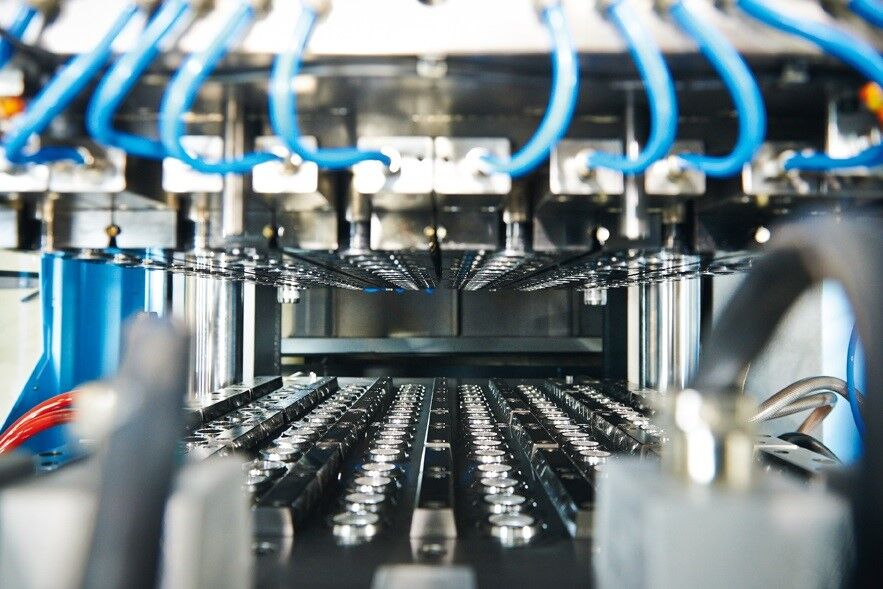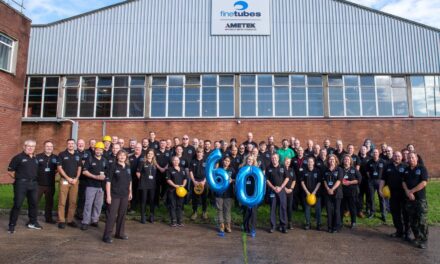The lines between medical machine qualification and validation are frequently blurred. Despite its dizzying complexity with countless integral pieces that need to slot into place, it’s a high stake process that’s reliant on input from numerous industry stakeholders. Yet, this risks over specifying manufacturing aberrations, often leading to nonsensical decisions that retrospectively should never have been documented in the first place during the machine design phase. At some point pragmatism has to step forward and override bureaucracy.
Medical Business Development Director at Sumitomo (SHI) Demag Anatol Sattel assembles the company’s very best qualification and validation experts, including Medical Sales Director Andrew Sargisson, Project Manager Erik Schalle, and UK medical sales specialist Sam Carr to reassure and describe how their teams work collaboratively with medical customers to support the entire Validation process.
- Where does machine qualification fit into the validation process on medical applications?
As a machinery manufacturer, Qualification relates specifically to the equipment and instruments that have been scoped out in the GMP project design specification documentation. This design documentation is effectively the contract that states what will be delivered, and the Qualification issued by Sumitomo (SHI) Demag before it is released ascertains that the moulding machine meets the user requirements specifications and the design/functional specifications.
Validation is verifying the complete manufacturing process, including reproducibility of components, batch-to-batch. This is performed externally by the customer themselves or specialist consultants appointed by medical device and component manufacturers.
Qualification forms part of the overarching validation masterplan (VMP). However, it’s just one of the verticals that feeds into the wider Validation process. The most common misconception is believing that our professionals at Sumitomo (SHI) Demag can validate processes. We don’t. We can only help customers by qualifying the equipment sold against the defined parameters specified. However, we can make the entire Validation process easier for customers by providing high quality consultancy at the outset of any project, drawing in all stakeholders when scoping out the machine design and user requirements specifications (URS). This helps to avoid over-specifying equipment or providing machinery that will never meet the processing tolerance requirements.
- Why is there such an emphasis on documentation?
Predominantly due to the liability risks. Legally, customers cannot hold the machinery suppliers liable. So, understandably, those who take on the task of bringing products to market want to ‘cover their backs’ legally. Resulting in a lot of written requirements being sourced from suppliers.
In our experience, European customers fall into one of two camps. Those that are highly competent in GMP qualification and validation and have set URS, functionality specification and validation documentation methodologies that they follow from beginning to end. Conversely, the other segment needs more handholding throughout the entire process. They may be entering new markets and consequently ask for everything. Even features that aren’t needed.
As impartial yet experienced medical consultants, Sumitomo (SHI) Demag can customise support to complement in-house resources. This can include adapting tried and tested documentation blueprints to scope out URS, artwork design, software and functional specifications. These files all have transportable sections, which can be tailored to each medical application a machine is being commissioned for.
- What’s advice can you offer to help streamline documentation processes?
There are no Qualification or Validation shortcuts. And with no standardised GMP documentation formats to follow, there are always subtle style differences. Yet, it’s good practice to keep this documentation as tight as possible, ensuring the content is unambiguous. Detailed but of a manageable size, without deviating from the original design qualification.
Medical manufacturers that create their own GMP documentations benefit from having a consistent tool to track the qualification of all associated equipment, including mould tools and automation solutions. This makes it much easier to manage defined steps for design, installation, operational and production Qualifications and Validations.
- Why are preliminary definitions so critical?
It may seem blindingly obvious, but you cannot test or validate against something that hasn’t been defined at the outset. The URS underpins the design qualification. Listing every element, the assigned authorised expert must state that every requirement can be fulfilled or present an alternative option. Without the URS, you cannot progress to GMP documentation.
The URS is always used by our engineers to define the machine layout. Medical customers use it for Validation, verifying that the injection moulding machine is equipped as defined at the preliminary stage and is working as expected.
Customers that cannot determine their needs can always draw upon our pool of medical experts to populate a document with the design detail. This consultancy support gives a level of transparency to all parties, helping to circumvent renegotiations later down the project line. Having a defined structure also enhances the overall production quality. It’s a real value-added service.
- How is GMP Qualification documentation delivered?
It’s a large paperwork file despatched with every medical injection moulding machine. The signatures are of great importance. How the GMP documentation is signed and dated is tightly regulated, even down to the preferred ink used. Even if all the documentation is correct, if the signature requirements haven’t been adhered to, e.g. someone else has signed on your behalf, the Qualification documentation is of no value to the customer. Regardless of the product quality and the processing quality, the medical product cannot be sold on the market if any part of this documentation is omitted.
Sumitomo (SHI) Demag medical machine Qualification files are signed and sent from the location where the machine order was fulfilled. For our machines, that’s Germany or China. However, like most global organisations we are transitioning to digital files in alignment with production capabilities.
- Who should input to URS documentation and SATs?
All members of the production team who possess an in-depth knowledge of processing should provide the initial input. Ensuring the machine commissioned will produce medical components of the specified quality and integrity. Notably, the same people should not be used to conduct the Site Acceptance Tests. It’s always deemed more robust if an impartial scientific or engineering based professional who makes no inherent assumptions about machine performance undertakes SATs.
Our medical team can provide support and guidance right up until the SAT. Once configured with the mould tooling, automation and other periphery equipment, the customer assumes overall responsibility for the production cell. At that point really everything should have been checked with regard to the material influences and how the moulding machine performs.
- Do machinery manufacturers have a responsibility to ‘red flag’ impossible processing requests?
Absolutely. This is of the greatest value to customers. Unrealistic processing decisions should be challenged at the earliest phase by the sales team, drawing in expertise when required. This prevents lengthy delays to time-critical projects.
Out of regulatory fear, people may submit a URS request that is completely unattainable and frankly mostly unwarranted for the medical component being made. For example, the repercussions of asking for +/-5 micron tolerance in a one dimensional plastic part can increase costs tenfold or more. That’s a challenging processing window, and unlikely justifiable. Realistically, the person requesting this has little comprehension of the time delay or cost ramifications, which inevitably passes down the chain.
Bringing clarity to requests of this nature can save medical manufacturers millions. With 15 globally trained and cross departmental medical experts, our team is confident intervening at the earliest phase to ensure any nonsensical requests when not critical to the performance of the end product, are scaled right back.



